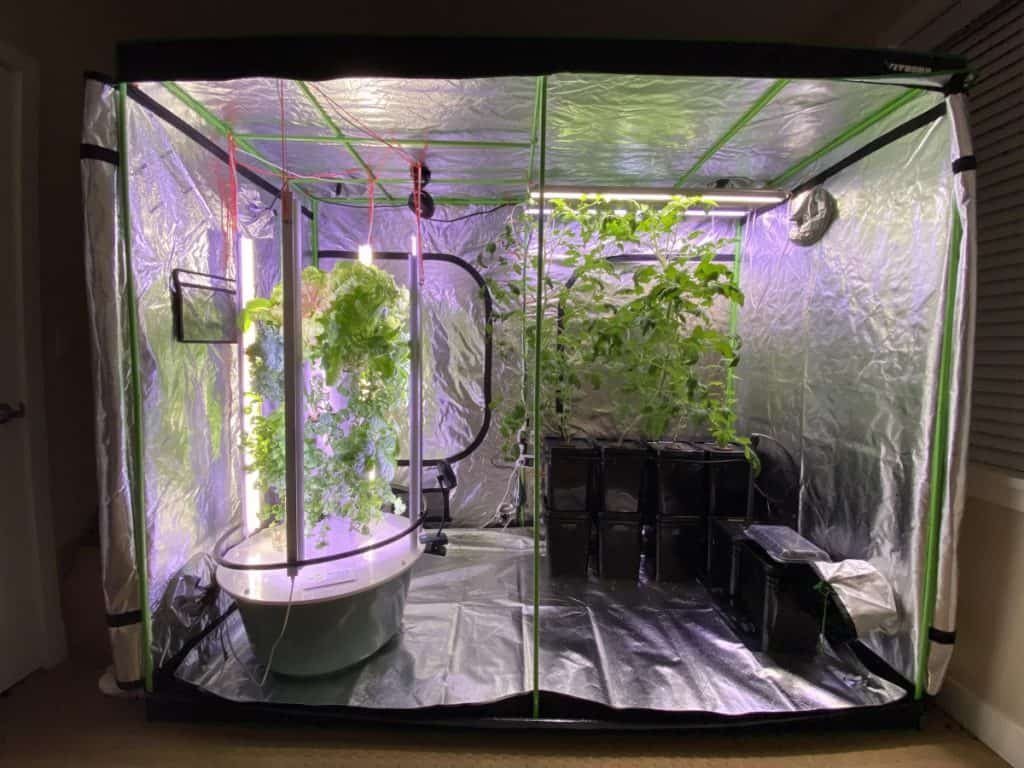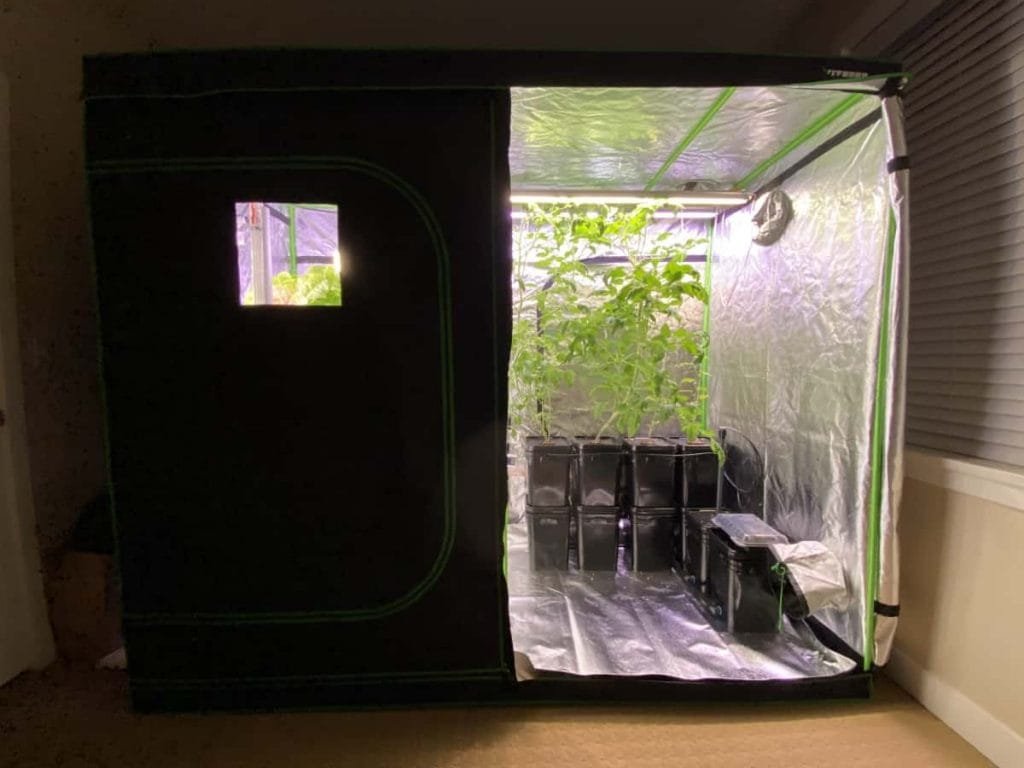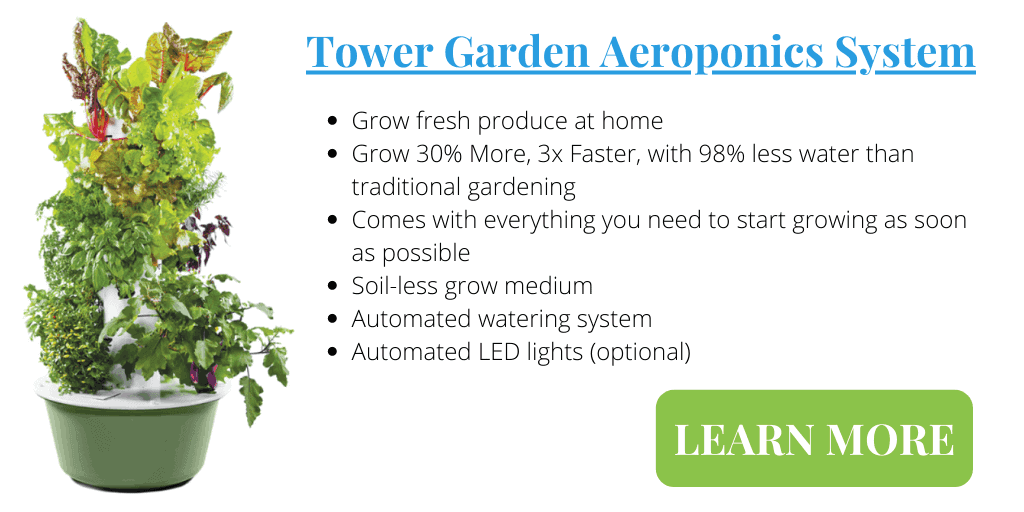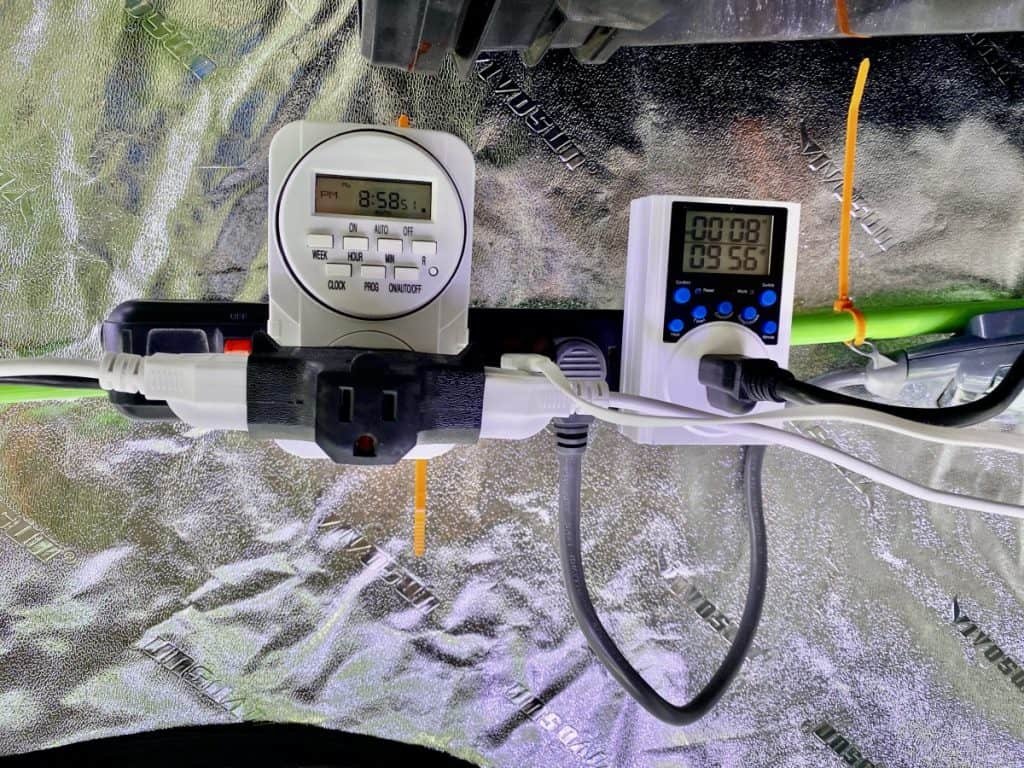A grow tent can be a great advantage, especially if your outside environment is not conducive to a long growing season. Using indoor growing methods is becoming more and more popular as people become interested in growing their own food, herbs, and medicinal plants. Grow tents can come with their own set of potential hazards for the grower but is it possible for a grow tent to catch fire?
Grow tents can catch fire. They can be a potential fire risk with all the electrical equipment contained in the tent. Using quality grow tents from reputable manufacturers as well as good quality lamps, heaters, fans, and monitoring equipment and locating the tent sensibly will minimize the risk.
There are many different types of grow tents made from different materials and to varying quality standards. Due to the nature of how grow tents are used, there is always some fire risk associated with their use, even with high-quality tents. There are, however, some ways to minimize the potential fire risk involved.

Are Grow Tents A Fire Hazard?
Grow tents on their own are not a fire hazard, but the associated equipment that goes inside them could very well turn your grow tent into a towering inferno!
Some grow tents may be more susceptible to heat sources and electrical faults than others, which would make some grow tents riskier than others in this department.
What Are Grow Tents Made From?
Top quality grow tents use a canvas material for the outer covering and diamond or textured Mylar on the inside. The canvas material is thicker and has the advantage of blocking light leakage from the inside of the grow tent as well as stopping outside light from affecting the light cycle inside the tent.
This canvas material is more resistant to catching fire than the nylon or polyester types, but it is still flammable and will catch fire in certain circumstances.
Cheaper grow tents are made from an external layer of nylon or polyester material, which is very lightweight, but also very flammable. The problem often comes in with the type of inner reflective material.
Diamond and Textured Mylar
Early grow tents used thin and cheap mylar as the inner reflective material, and while this material is very reflective, it was found to create dangerous hotspots on the material. If these hotspots became sufficiently hot, it could cause the outer material to combust.
Many grow tent manufacturers have found new and innovative ways to reduce the hotspots by adding texture to the Mylar as Pebbled, Hammered, Diamond, Worm or Litchi patterns. This has increased their cost but makes the grow tents safer as it does a better job of dispersing the heat and light.

Are expensive Grow Tents Safer?
There are a variety of grow tent types made from a variety of different materials. Often, the higher the quality of the material that the tent is made from, the more expensive the grow tent is. Here’s a list of our Top 5 Grow Tents for indoor growing
Many people who are starting out with a grow tent don’t want to spend a lot of money until they figure out the process of growing using this method.This means that beginners will often opt for cheaper models of grow tents that are made from cheaper materials, which is often where the problem lies and the greater risk of fire.
Some beginner grow tent users go one step further and attempt their own DIY construction of a grow tent. While it is possible to make a well-constructed, safe homemade grow tent, if you don’t understand the electrical components such as fans, heaters, and lamps, as well as electric circuitry, then the risk of fire increases with homemade grow tents.
What Causes Grow Tent Fires?
There are a few possibilities in a grow tent system that could result in a fire if the correct steps are not instituted to protect the grow system from this potentially catastrophic outcome.
Grow tent location
The area where you locate your grow tent is a key aspect in preventing a fire. Do not locate your grow tent near an external heat source such as a furnace, stove, heater, or fireplace. Keep your grow tent away from areas where there are flammable fumes, such as your shed where you store fuels and solvents, and other flammable liquids such as paint, wood varnish, or wood stains, and similar materials.
If it’s cold out and you are concerned about keeping your grow tent warm, check out my article, How to Keep a Grow Tent Warm.
Poor electrical wiring
If you are setting up your grow system yourself, you need to take care when installing the electrical wiring. Don’t cut electrical wires too short or leave wires exposed or cobble wires together without the correct connectors. Route the electrical wires where they will not be exposed to heat from lamps or water or moisture from the plants. This could cause short circuits resulting in sparks which could present a fire hazard as well as a shock hazard.
Use the right equipment
Quite a substantial amount of electrical gear goes into a grow tent, such as heating pads, fans, lamps, and voltage regulators for this equipment. Do not use electrical fittings, light fittings, fans, and other equipment that is not designed to handle the conditions inside a grow tent. Using the wrong equipment or equipment not made to handle the environment inside the grow tent could result in a fire occurring and the entire tent catching fire.

Lamp placement
Lamps that generate heat should be placed in the grow tent with careful consideration of their location in proximity to other electrical components as well as the material of the tent itself. We always suggest high quality LED lighting for the most efficiency and least heat output, check out our recent article to get more info in our grow light guide.
Top-down lighting that produces heat could be of particular concern if the lamps are close to the roof of the tent. As the heat rises, it could cause the roof of the grow tent to accumulate heat which may be more heat than the material was designed to withstand.
While these circumstances and types of equipment are potential fire risks, you can minimize the risk by following protocols, putting safety measures in place, and using good equipment.

How To Prevent Grow Tent Fires
As we have mentioned, the risk of fire can be reduced with the application of planning and common sense with the location and setup of your grow tent and the type of grow tent material that you choose.
Choose Quality Grow Tents And Equipment
The best way that you can minimize the risk of a grow tent fire is to use a quality, purpose-built grow tent. This principle is especially true if you are learning the process and still trying to figure out the ins and outs of growing in a grow tent.
A DIY solution may seem to be the more cost-effective approach to getting a grow tent setup running, but rather wait until you have some knowledge and experience before you try to build your own grow tent.
If you make the tent out of the wrong materials, you may not only be creating a fire hazard but also creating an environment in which your plants will not thrive, and you may have limited success with growing plants indoors.
Always use the best quality equipment that you can afford. This statement not only rings true for the quality of the grow tent but also for all the lighting, heating, and air-circulation equipment that will be installed inside the grow tent.
If at all possible, get a kit where the electrical components are designed to fit inside the grow tent with safety measures built-in regarding the placement of this equipment inside the tent.
Keep A Fire Extinguisher On Hand
Even if you have the best equipment and the best grow tent, there is still a potential risk of fire with the equipment inside the grow tent.
Having the means to deal with a fire close at hand may mean the difference between getting a fire under control quickly to one that gets out of hand and claims more than your grow tent!
A fire extinguisher or a few extinguishers, depending on the size of your operation, would be a good safety precaution to have on hand near your growing operation.
Remember to choose fire extinguishers that are rated for use on electrical fires.
Monitoring Your Grow Tent
Never leave your grow tent for many days without inspecting the plants growing inside or monitoring the lighting, heating, and air-flow systems. Your plants should be checked frequently so that you can take action to rectify growth problems, nutrient problems, or pest control.
At the same time that you check on your plants, you will be able to pick up on any potential problems with any of the equipment and take the necessary steps to fix minor complications and issues before they become a major problem.
Conclusion
Grow tents have been around for some time, and their quality, durability, and safety have improved with each new product that has emerged in this sector.
The growing popularity of this type of plant production has also driven further research and development from manufacturers of the equipment to improve their products to not only improve success in the growing of the plants but also to improve safety standards.
If you are thinking about starting out with a grow tent, don’t let the potential of a fire risk put you off from trying it out. Just make sure that you use good equipment from reputable suppliers, and your risk will be minimal.
